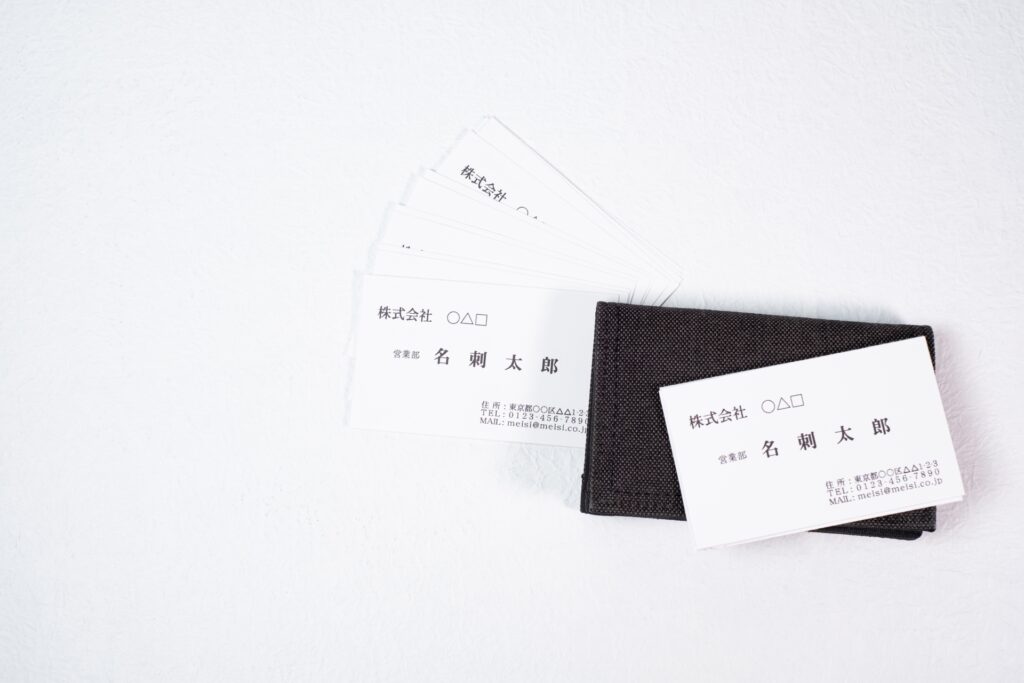Exchanging business cards in Japan—known as meishi koukan—is more than a formality; it reflects your professionalism and respect. Whether you’re attending a meeting in Tokyo or connecting with Japanese clients abroad, mastering this ritual is key to making the right impression. In this guide, we’ll walk you through the step-by-step etiquette, cultural nuances, and modern adaptations you need to succeed in Japanese business settings.
What Makes Business Card Exchange in Japan Unique?
In Japan, exchanging business cards—known as meishi koukan—is more than just a polite gesture; it’s an essential part of professional interaction. The process reflects one’s respect for the other party, as well as an understanding of hierarchy and formal customs that are deeply embedded in Japanese culture. A business card is seen as an extension of the individual, representing their role, company, and identity. This is why meishi koukan is performed with ceremonial precision and careful etiquette.
Unlike Western business environments where cards may be casually handed over at the end of a meeting or even mailed, Japanese professionals exchange cards at the very beginning of a meeting, setting the tone for a respectful and orderly interaction. Every aspect—from the angle of the bow to the condition of the card—is taken seriously. This ritual offers an immediate impression of your professionalism and cultural competence.
Step-by-Step: How to Properly Exchange Business Cards in Japan

Preparing Your Business Cards for Japan
Before you even land in Japan, it’s crucial to ensure your business cards are ready. Here are the essentials:
- Quantity: For business meetings, bring at least 30 cards. For conferences or large networking events, bring at least 100.
- Bilingual Design: One side in English, the other in Japanese. The Japanese side should face up when presenting the card.
- High Quality: Cards should be printed on thick, clean stock with no smudges or bent edges.
- Storage: Use a professional business card holder, never your wallet or pocket.
Understanding Japanese Business Card Sizes and Layout
Japanese business cards follow a standard size of 91mm x 55mm, slightly larger than the U.S. standard (89mm x 51mm). This difference, though small, impacts how cards fit in holders or wallets. When designing your card:
- Orientation: There is no strict tradition favoring vertical orientation. Either layout is acceptable, though the content should follow the typical Japanese order of “Company Name → Department → Title → Name.”
- Bilingual Layout: Japanese on one side, English on the other.
- Font and Kanji: Ensure proper translations, particularly for job titles and company names.
A poorly translated card not only appears unprofessional but could also lead to misunderstandings.
Business Card Dos and Don’ts in Japan
Business Card Dos and Don’ts in Japan
- Do use both hands to present/receive
- Do take a moment to read the card
- Do place received cards neatly on table
- Don’t put cards in your back pocket
- Don’t write on someone’s card in front of them
- Don’t offer a damaged or dirty card
Exchanging Cards in Person: Timing, Gesture, and Language
At the start of the meeting, business cards are exchanged after the initial greeting. Here’s the correct procedure:
- Stand when exchanging cards.
- Hold your card with both hands, Japanese side facing the recipient.
- Bow slightly as you present the card and say, “[Your name] desu. Yoroshiku onegai shimasu.”
- Receive with both hands, study the card briefly, and place it neatly in front of you or into a card holder.
- Never stack cards or treat them casually during the meeting.
Correct posture and synchronized movement reflect attentiveness and respect. Aim for a 15-30 degree bow, depending on seniority.

What NOT to Do: Common Mistakes to Avoid
Even well-meaning professionals can make missteps that may be seen as disrespectful in Japanese culture:
- Do not hand over a card with one hand.
- Do not give or accept cards while seated.
- Do not place the card in your pants pocket, especially the back pocket.
- Do not write on a business card during the meeting.
- Do not flip through cards like a deck; give each card attention.
Being mindful of these common errors shows cultural awareness and a willingness to adapt.
Understanding the Cultural Context Behind Meishi Koukan

To truly understand the ritual of business card exchange in Japan, it’s essential to consider the cultural values at play:
- Respect and Hierarchy: The order in which cards are exchanged often mirrors company rank. Junior employees present cards first to their counterparts.
- Group Harmony (Wa): Interactions are shaped by the desire to maintain harmony. Observing formalities reduces friction and fosters mutual understanding.
- Face and Humility: A respectful card exchange allows both parties to “save face,” a core concept in Japanese social conduct.
For example, in a meeting between a U.S. startup and a traditional Japanese firm, failing to acknowledge hierarchical structures during the card exchange can start the interaction on the wrong foot.
Modern Considerations: Digital Cards and Remote Meetings

In an increasingly digital business world, meishi koukan has also adapted. While physical cards remain dominant in Japan, remote meetings and digital tools are changing the landscape:
- Digital Business Cards: Apps like Eight or QR codes embedded in email signatures are becoming common.
- LinkedIn: While not a direct substitute, LinkedIn profiles are sometimes shared post-meeting.
- Remote Etiquette: On Zoom or Teams, introduce yourself formally and email your digital card in advance or follow-up.
Physical vs. Digital Card Exchange
| Physical | Digital |
| Formal, preferred in-person | Convenient, useful in remote or hybrid settings |
| Represents tradition and status | Reflects modernity and flexibility |
Special Situations: Industry, Company, and Age Differences
Not all Japanese business environments follow meishi koukan in the same way. Consider these variations:
- Industry: Tech startups may be more relaxed, while finance and manufacturing tend to be more formal.
- Company Type: Foreign firms in Japan might blend Japanese and Western etiquette, while domestic firms adhere strictly to tradition.
- Age Dynamics: Younger professionals may be more casual, but they still show deference to seniority during card exchange.
Being sensitive to these nuances will help you tailor your approach and avoid missteps in different business contexts.

Conclusion: Why Mastering Meishi Koukan Sets You Apart
Learning the art of business card exchange in Japan is more than just etiquette—it’s a strategic move that sets you apart. By honoring this custom, you demonstrate respect, cultural literacy, and attention to detail. These traits are highly valued in Japanese business culture and can open doors to deeper trust and long-term relationships.
Whether you’re preparing for your first meeting in Tokyo or managing a cross-cultural team, mastering meishi koukan shows that you’re not just doing business in Japan—you’re doing it right.











